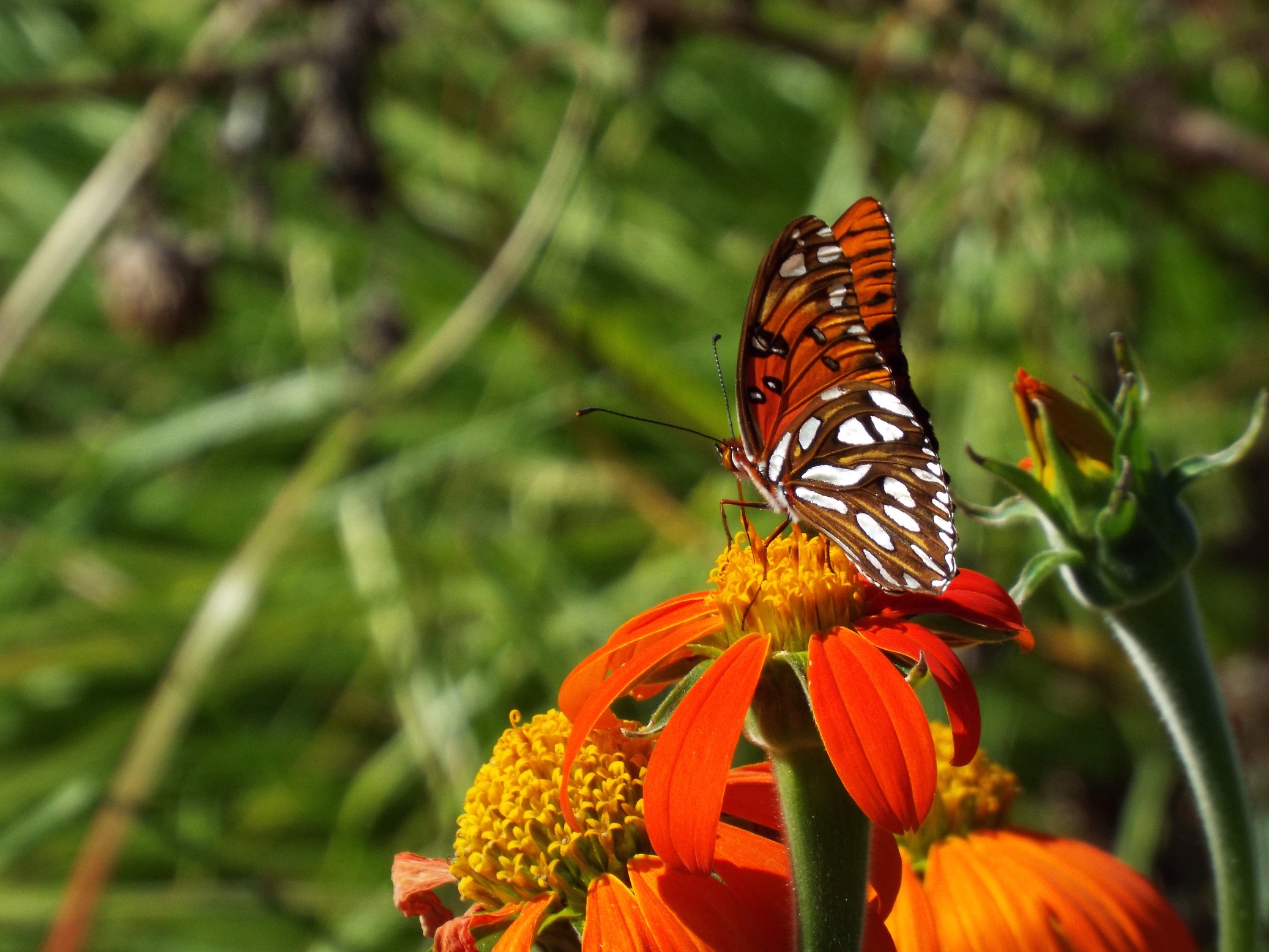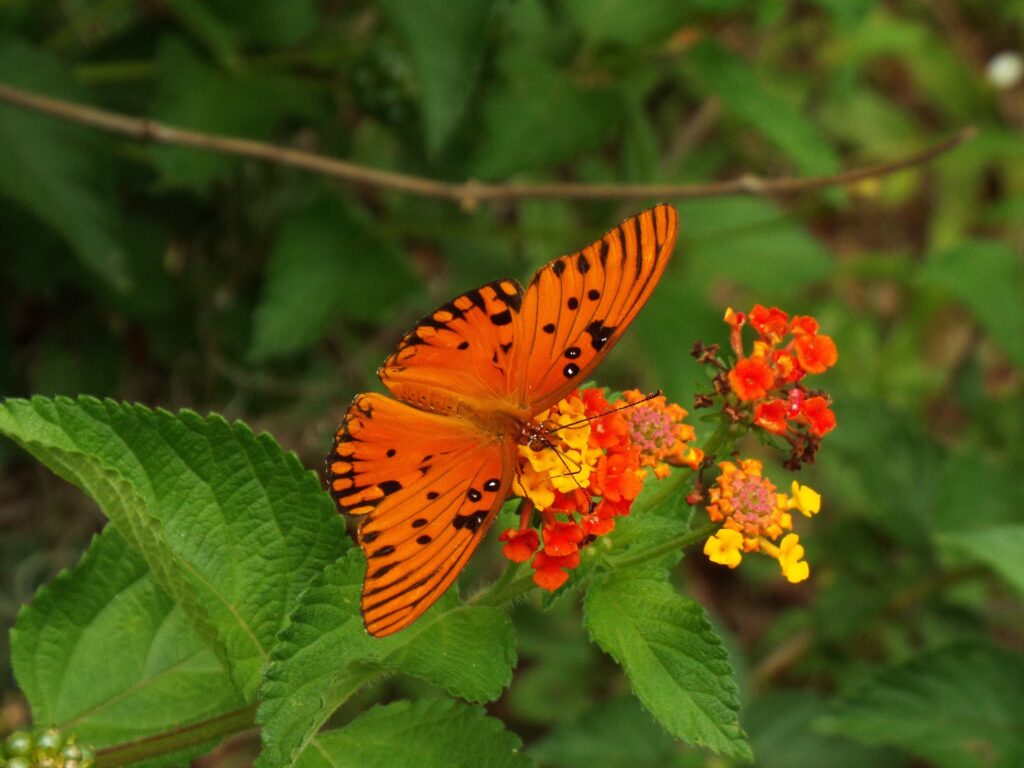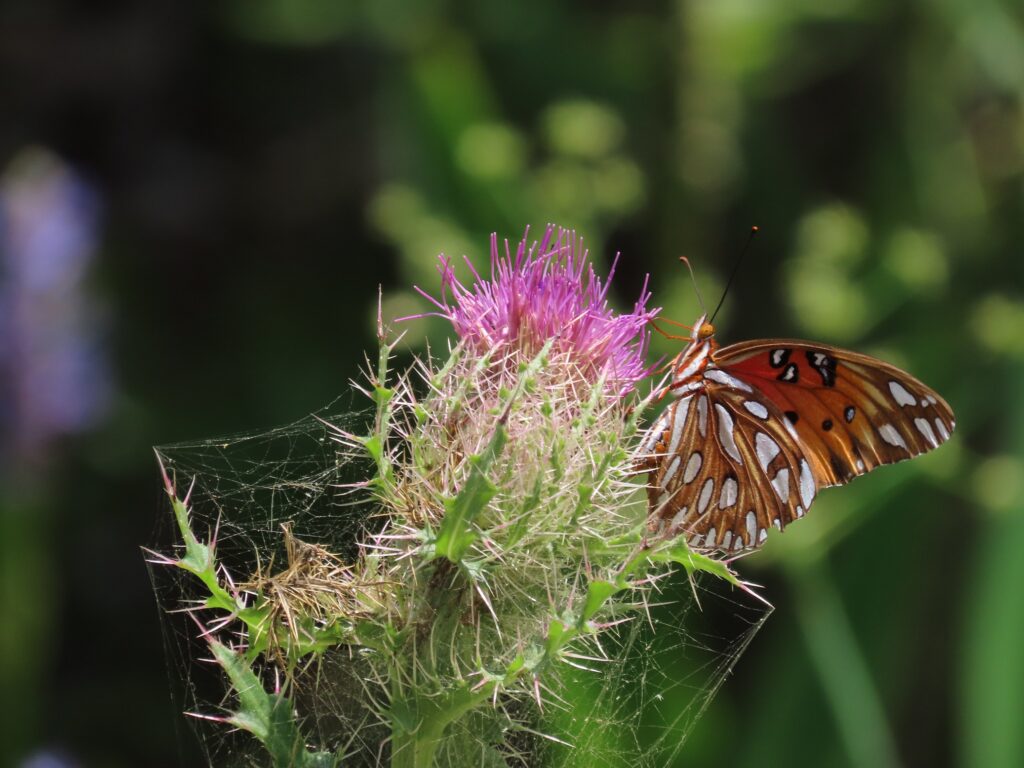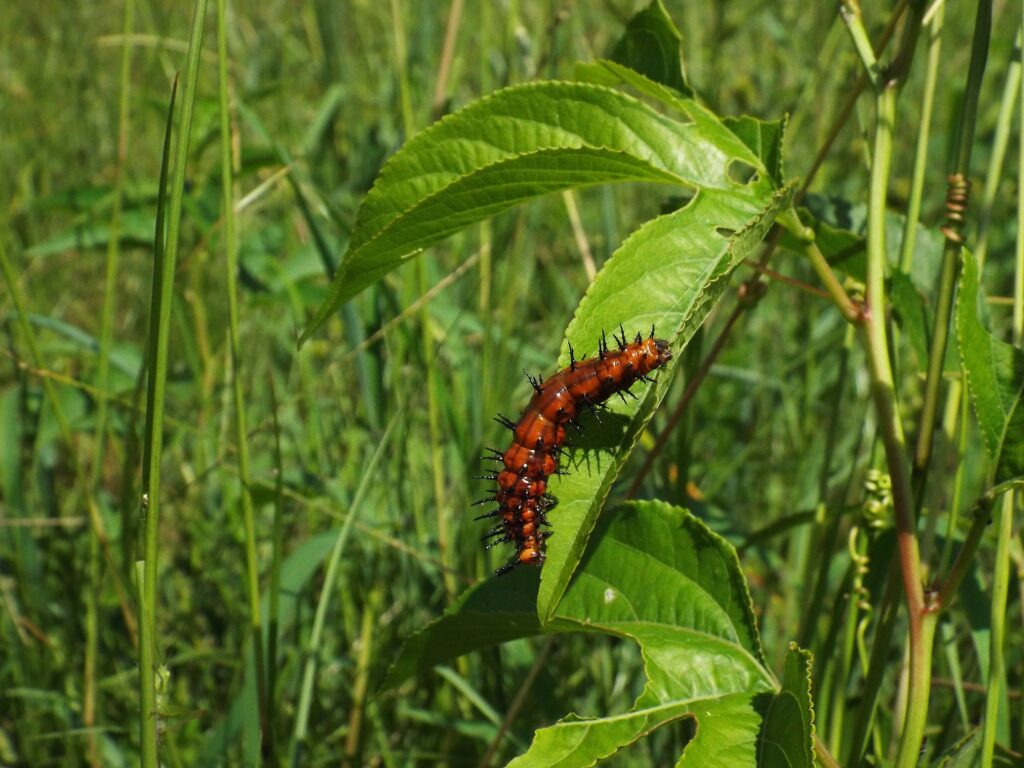




This week for Flora and Fauna Friday we have an orange tropical tourist, the Gulf Fritillary (Dione vanillae).
A cinnamon-orange sheet glides upon a flower top, soon to fold and hold aloft a stained glass pane of silvered whites soldered into bronze. The Gulf Fritillary is one of our most prolific and photogenic summer butterflies. It’s a large butterfly, usually three-inches wide. Its upper surface is a uniform palette of warm cinnamon-orange fringed and framed with graphite-black spots and veins and accented by three white spots, ringed in black, on the leading edge of the forewing. Beneath the wings it’s far more dynamic. That cinnamon-orange burns through in the center of the forewing but is elsewhere replaced with warm-bronze. Within the bronze are set great globs of pure-white, which have been likened to the patterning of stained glass. From beneath, thick white stripes can also be seen across the length of this butterfly’s body. The caterpillar of the Gulf Fritillary is also quite striking. It is a rich, glossy orange and staked across its entire length with black, thorned spines. This bright orange aposematic coloration on both larvae and adults hints that this species has a toxic defense. Gulf Fritillary caterpillars feed on Passionflowers (Passiflora spp.) and these vines contain toxic compounds to ward off insects and other herbivores. However, Fritillaries are able to tolerate these toxins, sequester them in their own bodies, and themselves become toxic.
Gulf Fritillaries are common on Edisto Island in the summer and are especially numerous in fall. They are regular visitors to flower gardens and will land on almost all large flowered plants. They are also quite prolific along roadsides, fence rows, farm fields, and pastures where they prowl for Passionflowers to besiege. Our Gulf Fritillary population balloons in fall because this species is one of our tropical migrant butterflies. Although we have many pockets of resident populations, most of our Gulf Fritillaries are coming up from Florida for the summer. As the butterflies multiply in the spring in sub-tropical Florida, they eventually start flying north. By mid-summer they begin to arrive on Edisto Island and by October they’re arriving here in droves! The butterflies that migrate don’t return south. Instead they lay eggs in hopes that their children can find a foothold the following spring.